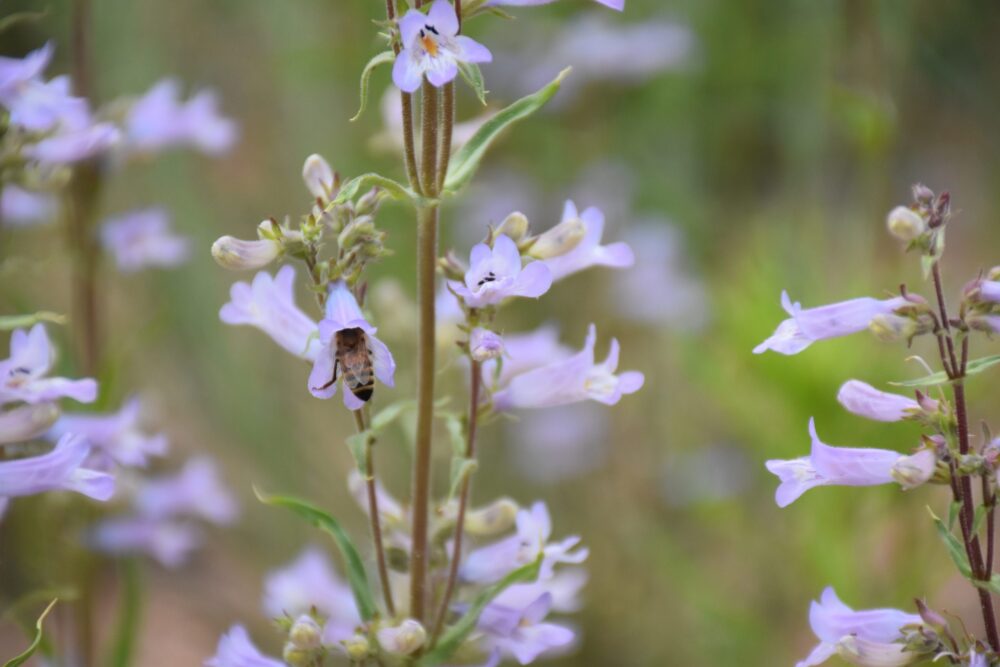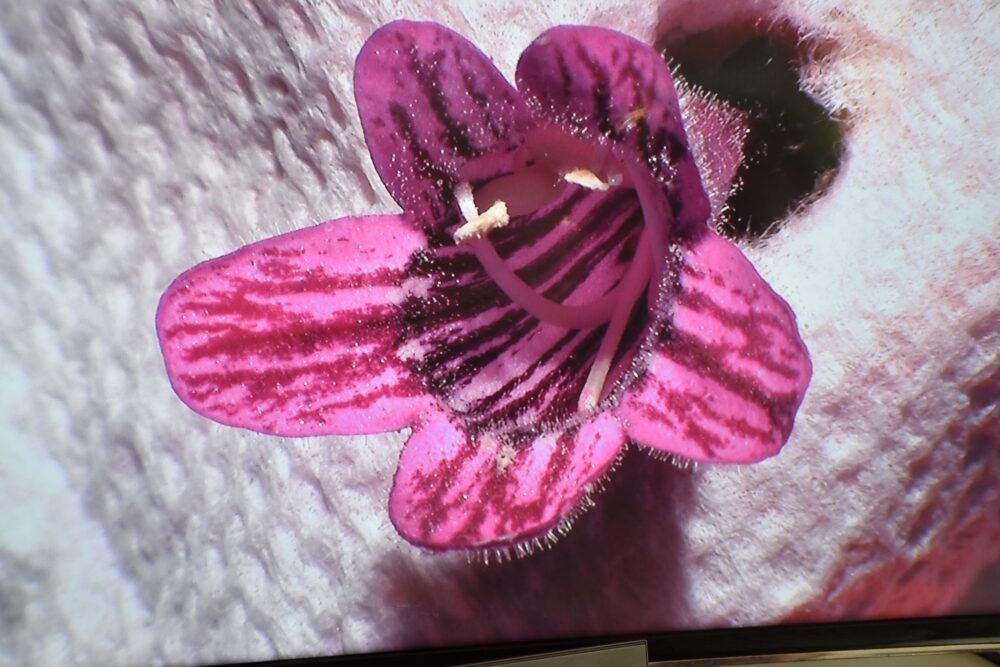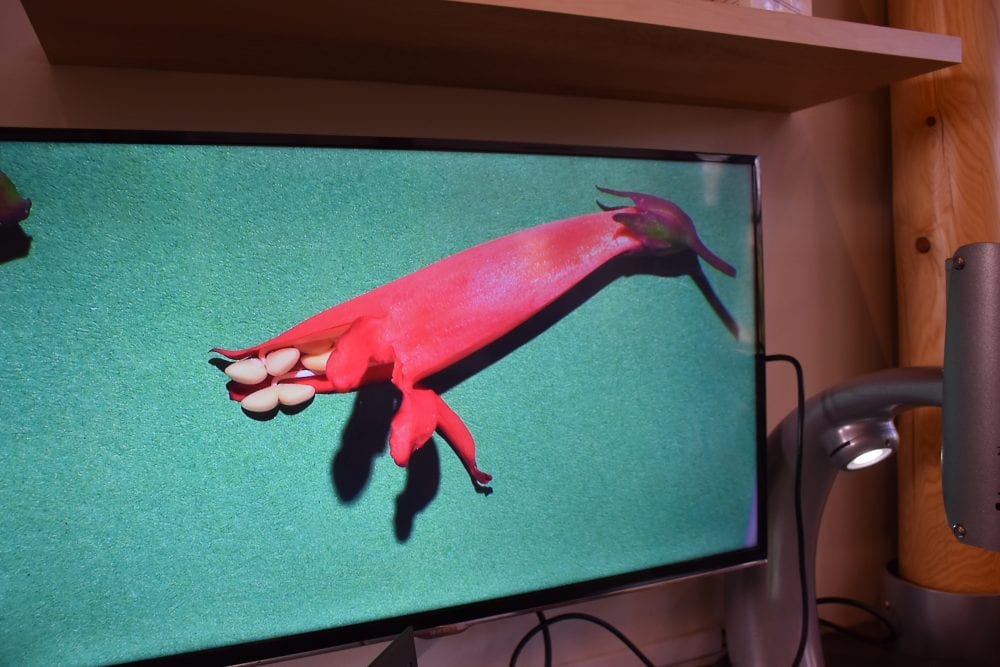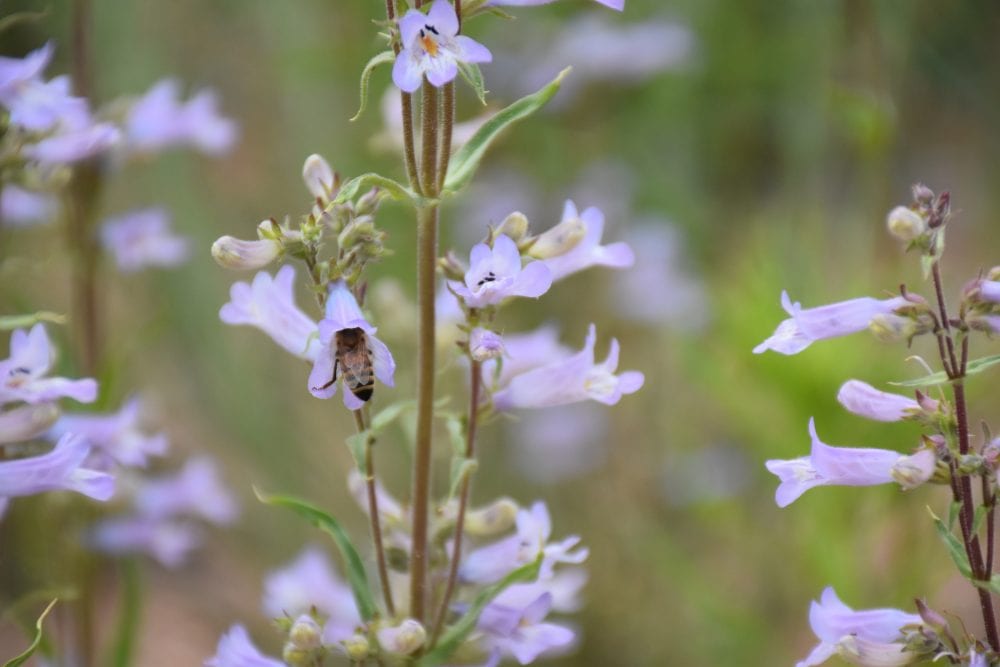
By Larry Deaven
Penstemon flowers provide a rich source of moisture and nutrition for a variety of pollinators. This fact is especially important in desert conditions, where both food and moisture are limited.

About 80 percent of all penstemon species have white, blue, or purple flowers. These flowers are usually cup shaped and have relatively large openings. Their shape has evolved to be pollinated by a variety of insects, like bees, moths, and butterflies.
The remaining 20 percent of penstemon species have flowers that are usually red, bright pink, or yellow. These flowers are usually tubular, are relatively long, and have narrow openings. They have evolved to be pollinated by hummingbirds.
If you looked inside a penstemon flower, you would see four stamens (these are the structures in a flower that produce pollen); two of the stamens are on the roof of the flower, and two are on the floor of the flower. This arrangement is designed to maximize the chances of the hairs on an insect’s body picking up some grains of pollen when the insect enters the flower.
We would also see a fifth stamen that does not produce pollen. This structure is called a staminode, and it is often covered with hairs. In some flowers the staminode extends outside of the flower opening where the ball of hairs acts as a landing platform for flying insects. In other flowers, the end of the staminode is inside the flower where the ball of hairs forces an insect to brush against the stamens and pick up some pollen grains as it travels to the back of the flower to find nectar.

Another structure inside the flower is the pistil, a rod with a knob on the end of it. The object of this design is to use insects to pick up pollen grains from a stamen and deposit them on the pistil (to pollinate the flower).

The most frequent insect visitors to penstemon flowers are honey bees, bumble bees, and native bees. Less frequent, but still common, are several kinds of flies, butterflies, and beetles. Most of these insects visit the flowers to collect nectar, but some of them also collect pollen that is then eaten by them or by their developing young. This collected pollen is a loss for the penstemon, so an abundance is produced. In the flowers of some species, the pollen is produced in a sac with raspy teeth on the opening. These teeth partially block the opening, preventing an insect from taking all of the pollen in a single visit.
The red-flowered, tubular penstemons are difficult for most insects to enter, so they are favored by hummingbirds. These flowers have the same internal structure as the other flowers. When hummingbirds collect the nectar, they pick up pollen grains on their foreheads, which they carry to other flowers.
Some bumblebees have learned to land on the base of these flowers, make a small hole, and drink the nectar. This is called “nectar-robbing.” Perhaps the next evolution in penstemon flower structure will be some protective element at the base of each flower to prevent nectar theft!


Larry ! Thank you for this fabulous article how different pollinators not just hummingbirds , I used to think are able to extract pollen from these exciting flowers . Each picture is exquisite and precious.
Hi Selvi,, You are one of the penstemons best friends and an avid supporter of the gardens. The hummingbird-pollinated flowers all evolved from insect-pollinated flowers. This evolvement occurred on 12 to 20 different occasions. This story is one of the outstanding examples of convergent evolution.
One of my favorite things about the penstemons at the nature center is seeing how so many different kinds of pollinators are each attracted to the different sizes, shapes, and colors of penstemons. I’ll really miss being there in the evenings this summer when the hummingbirds and moths seem to always be so active.